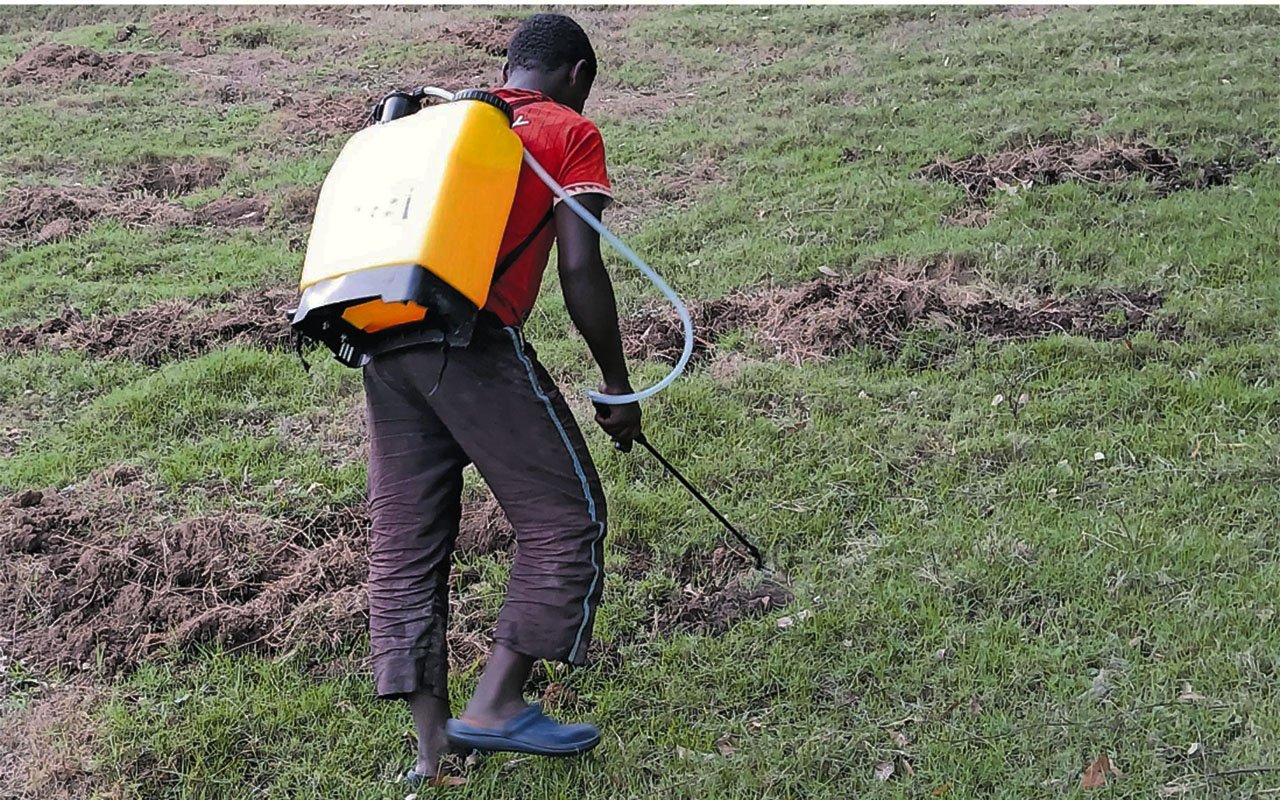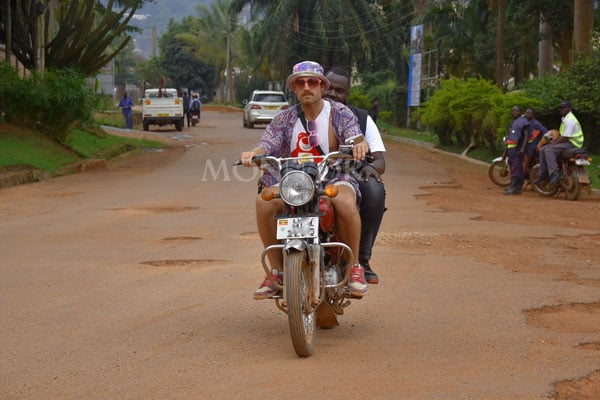Prime
Uganda to raise Shs300b for crude oil pipeline

Japan’s Sumitomo Mitsui Banking Corporation Europe Ltd (SMBCE), Standard (Stanbic) Bank, and Industrial and Commercial Bank of China Limited (ICBC), the three financial advisors for France’s Total E&P, Uganda-Tanzania, and China’s Cnooc, are said to be carrying out “market sounds to gauge financing appetite” for the proposed East African Crude Oil Pipeline (EACOP).
Officials familiar with the matter say the response is so far “positive” especially given that the technical Front-End Engineering Designs (FEED) for the 1,445km pipeline planned to run from Hoima to Tanzania’s southern Tanga Port are not yet in.
The FEED study report, according to Total E&P, the lead joint venture partner on the project, is currently at compilation stage.
The tender for FEED was awarded last December (slightly behind schedule) to Houston-based Gulf Interstate Engineering to examine the technical aspects to give a clear picture of the project, which is expected to pave way for Final Investment Decision (FID), and subsequently lead to Engineering, Procurement and Construction (EPC) later next year.
Besides advising on the debt structuring (70 per cent of the projected $3.5b capital expenditure), SMBC, Stanbic and ICBC, are also advising the parties—the oil companies, Total, Cnooc and Tullow—and the Uganda-Tanzania governments, on the 30 per cent equity structure.
Uganda’s equity of 15 per cent (out of 30 percent) will be carried through the National Pipeline Company (NPC), a subsidiary of the Uganda National Oil Company (Unoc), which is mandated to oversee the country’s commercial interests in the petroleum sector.
This 15 per cent, according to the NPC general manager , Mr John Bosco Habumugisha, translates into roughly $106m (approx. Shs377b) which will either be raised from the budget or government could turn to its traditional lenders.
“We looked at 15 per cent as ideal because the government has the same participation in the Production Sharing Agreements (PSAs),” Mr Habumugisha explained. “So the rationale is for government to have equal share in both the upstream (oil fields) and midstream (pipeline).”
The PSAs signed with oil companies provide for government’s participation through a carried interest of up to 15 per cent in each of the licenses, now through Unoc. The latter being a new entity and without any capital source means the oil companies have to undertake all investments in the upstream until oil revenues start trickling in.
The investments will be offset as recoverable costs.
Unoc was incorporated in June 2015 under the Companies Act by the Uganda Registration Services Bureau as a private company and wholly owned by government through the ministries of Energy with 51 percent and Finance 49 percent shareholding, respectively.
According to the Petroleum (Exploration, Development and Production) Act, Unoc is tasked with managing and marketing of the country’s share of petroleum received in kind, develop in depth expertise in the oil and gas industry, and to investigate and propose new upstream, midstream and downstream ventures locally and internationally.
wWith a total length of 1,445km from Hoima to Tanga, only 20 per cent of that distance is in Uganda—298km—from the pumping point at Kabaale in Hoima through the districts Kakumiro, Kyankwanzi, Mubende, Gomba, Ssembabule, Lwengo to Rakai at the border.
The section, according to one project brief seen by this newspaper, is expected to cost estimated $700m (approx. Shs2.4trillion).
It is estimated that “annual direct in-country spend, could be $120m or Shs426b (based on 50 per cent spent on construction in country and 50 percent spent on materials, and engineering services overseas),” the brief reads in part.
“The magnitude of the indirect and induced jobs is subject to actions required by both governments and project developers in respect of optimising the potential economic impacts arising from major construction projects.”
Mr Ernest Rubondo, the executive director of the oil sector regulating body Petroleum Authority, in a separate interview said the job aspect is something that government is taking “very seriously.”
“In addition to direct jobs the project has huge potential of inducing other jobs in other areas such as logistics and supply chains, catering, security, among others, so this is something that we are very keen about. What we have to ensure is capacity building,” Mr Rubondo said.
“In terms of building capacity, for example we embedded our local in Houston and Paris where the pipeline’s design reports are being compiled. The essence for this was two way; to have our own people looking out at what is being done but also to offer them firsthand experience,” he added.
Some of the long term jobs associated with project and ring-fenced for Ugandans, Mr Rubondo cited security, catering, logistics, and health, safety and environment.
The “direct potential value of employment” according to the project’s brief is in the ranges of $30m-$60m (approx. Shs106b-212b).
This is added to the fact that the pipeline, once eventually built, will be under maintenance over the years which means will create employment in the long run.
Other proposed accompaniments to the pipeline include eight stations and a marine export terminal at Chongoleani, near Tanga Port, a fiber optic cable to allow communication between Hoima and Tanga, and a high voltage line to supply power to the various trace heating stations.
Uganda’s (Brent) crude oil has low sulphur content—making it heavy, waxy and and solidifies at room temperature, requiring the heating of the pipeline (to keep at above 50 degrees Celsius) for it to flow through. EACOP will thence be the longest electrically heated pipeline in the world.
The pipeline’s operating expenditure is estimated in region $115m (approx.Shhs408b) per annum.
Tanzania to reap big
Mr Habumugisha in an interview also revealed that although the equity structure is still under works, Tanzania was looking between 8-10 per cent stake in the project but “this is not yet final.”
At least 80 per cent of the pipeline, 1,147km, will be on the Tanzanian side. A separate project brief for the Tanzanian section indicates that 80 per cent of the projected ($3.5b) capital expenditure will be spent in Tanzania.
The project represents the largest trade deal ever between Tanzania and Uganda, currently comprising $120m (Shs425b) annually in each direction.
“It is conceivable that annual direct in-country spend, could be in the region of $500m or Shs1.7 trillion, (based on 50 per cent spent on construction in country and 50 per cent spent on materials, and engineering services overseas),” the project brief prepared for the Tanzanian government reads in part.
The brief indicates that 200km of new permanent roads and corresponding bridges will be built, and another 150km of existing roads “could be” upgraded. This is, added to creation of an estimated 10,000 jobs in Tanzania during the construction phase.
The country’s equity in the project will be carried through the Tanzania Petroleum Development Corporation, their equivalent of Unoc.
Works on pipeline structure ongoing
Technocrats from Uganda and Tanzania are currently discussing the Host Governments Agreement (HGA) that defines the rights and obligations between each country on the project, and will be ratified by the respective Parliaments once signed.
The HGA is expected to pave way to discussions on the Shareholders Agreement, which Mr Habumugisha said will lead to the formation of PipeCo, the special purpose vehicle that will construct, own and operate the pipeline.
“The Shareholders Agreement is critical in equation before you talk of forming pipeline holding company (PipeCo),” he added. PipeCo, once formed, will then negotiate the Project Financing Agreements and Transportation Agreement between Shippers of oil from Tanga port to the international market.
Pipe Co shareholders will facilitate the project construction through a mix of equity and project financing, seeking to achieve between 60 percent and 70 per cent of external debt.
“Debt can be raised by the project and backed by its viability,” Mr Habumugisha explained.
Besides bankability, one oil company official said the “footprint” of oil companies including Total E&P adds “some weight” to the project viability.
So far, only Tullow which is currently finalising sale of its majority Ugandan shareholding to Total and Cnooc has committed 10 per cent equity to the multi-billion dollar project. Total, whose top executives had earlier chest thumped on having the $3b available but company officials in Kampala later maintained that they were quoted out of context, and Cnooc say they are waiting for the FEED study.
The oil companies in a joint statement to this newspaper said “upon FEED completion, we will launch the purchase orders for the pipes, coating plants, electrical trace heating, etc.
The Engineering, Procurement, Construction and Management, contractor will also be selected to make the detailed engineering, to finalise the procurement and to supervise the construction of the pipeline.”
This, they added, is besides the back to back land acquisition along the proposed corridor from Hoima to Mutukula on the Ugandan side, and environmental impact and social impact assessments (ESIA).
The Tanga route, according to feasibility studies, was deemed the least cost route for Uganda to construct a pipeline to transport its oil to the international market on among other grounds, convenient constructability (flat terrain), highest availability (fully functional), lowest environmental footprint, and provides the shortest schedule for seeing first oil export—earliest mid-2020.
This was besides Tanzania’s convenient land tenure of no freehold system.
Once EPC is launched the construction phase is expected to take an estimated 36 months with expected enormous demand for materials and equipment.
President Museveni and his Tanzanian counterpart early last month laid foundation stone for the project in Rakai district, the second after the one at Tanga which they laid at Tanga three months ago. Given the high stakes high involved including attracting international lenders insiders said the two key events translated into “joint political will.”
Earlier in March, the two leaders penned the Heads of State agreement concretising the Hoima-Tanga route. The agreement also provided that Value Added Tax (VAT) should be paid deemed paid during the three years of the construction phase; Depreciation should be 5 per cent straight line method throughout the lifespan of the asset; and the application of Branch Profit Tax by the two states when the pipeline structure is complete and communicated.
A week later, Energy minister Irene Muloni and Tanzania’s minister for Constitutional and Legal Affairs, John Palamagamba Kabudi, signed the Intergovernmental Agreement (IGA) that binds the two governments on the EACOP.




